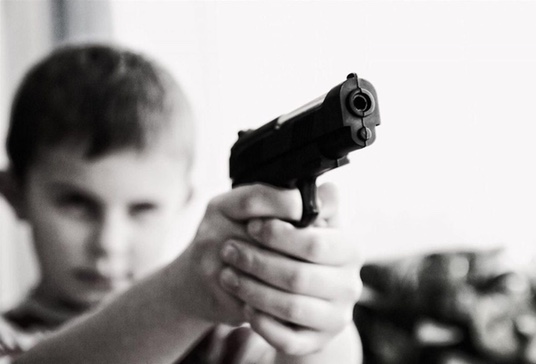
No one in the Cuyahoga County Juvenile Court system, including the probation department, is in possession of a crystal ball, or so I would venture to guess, which means they have no accurate way of predicting the future. But one would think that when a juvenile is arrested for armed robbery at age 14, that alone would be a good indicator of bad things to come in this youth’s future, and strong corrective measures would be initiated.
In a recent case that “bad thing” was the killing of a 12-year-old child and the wounding of five other teenagers about a year after the youth that pulled the trigger was first placed on probation for armed robbery. Did juvenile authorities really think that placing the youth on probation for a year would be enough of a corrective to prevent future acts of gun aggression? Really?
What has apparently happened in society is that gun possession among youthful offenders has become so prevalent that it’s now normalized. It’s viewed as “no big deal” — that is, until six kids are shot. According to a report I saw some years ago, youth that shoot or kill someone have had an average of six prior interactions with law enforcement, which means six opportunities to intervene in the wayward child’s life were missed.
The pat, standard answer to deflect criticism in cases like this is “the system is overworked,” caseloads are too big, and there’s no money available to hire more staff. Nonsense.
And here’s why: Set aside the toll in human suffering — a family’s loss of their beloved child and the wounding of five other children — for a moment if you will, and take a look at this from a monetary perspective. Before this case is over (and it won’t be over for 30 or so years when the shooter is finally released from prison), it will have cost taxpayers literally millions of dollars. The hospitalization of the five wounded youth alone could cost well over a million, then add the costs of adjudicating the case, and the cost of incarcerating the youth for the next three or more decades and there goes another million.
As a society, we truly are pennywise and pound foolish. We’d rather pay in pain, suffering and loss of treasure on the installment plan, instead of treating youth violence like the public health crisis it truly is.
What if there was a way to prevent youth from picking up the gun in the first place? Of course the best answer is engaging in good parenting, but what about the youth that have the bad luck of being born to parents who don’t know how to do their job? Until the problem of bad parenting is corrected via programs like the Harlem Children’s Zone, what intervention strategies can be developed in the interim?
One idea gaining traction is a boarding school for training at-risk youth in the skilled trades. Yes, a residential school — starting at 9th grade — where the most at-risk youth can be housed, mentored and turned into young men with bright futures. The key is removing them from the communities (and yes, their dysfunctional families) that, statistically, are sure to fail them and placing them in an environment where father figures from their own tribe can mold them into men.
This is not complicated, folks — no matter what the experts tell us. These experts are the same people that design reactive programs such as “Violence Interrupters” — a program that sends adults to hospitals where shooting victims are recovering to try to prevent retaliation. The only problem is, someone has to get shot first. Wouldn’t it be better to focus on a program that prevents the shooting in the first place, or has the black community gotten too fond of holding candlelight vigils after killings, and then placing teddy bears and balloons at the site of the slayings?
Allegedly, an 11- or 12-year-old girl in attendance at the site of the most recent vigil on Buckeye Road after the six youth were shot was overheard saying, as she looked at all of the pretty toys, candles and balloons, “I wish we had something like this in my neighborhood.”
Sad enough to make the grown man who overheard this cry.

From CoolCleveland correspondent Mansfield B. Frazier mansfieldfATgmail.com. Frazier’s From Behind The Wall: Commentary on Crime, Punishment, Race and the Underclass by a Prison Inmate is available in hardback. Snag your copy and have it signed by the author at http://NeighborhoodSolutionsInc.com.
One Response to “MANSFIELD: It Can Make Grown Men Weep”
Kathy Coleman
Good article